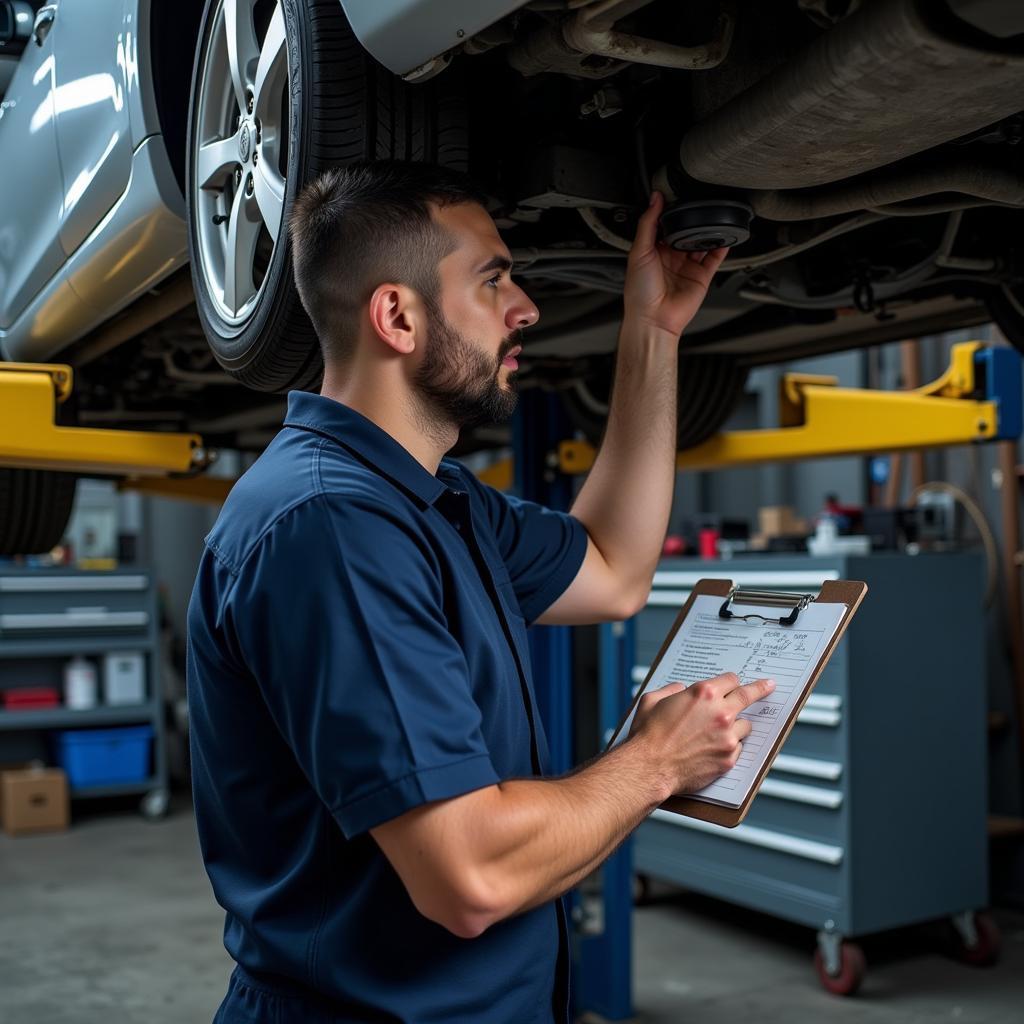How to Service Your Car at 100,000 Miles
Reaching the 100,000-mile mark is a significant milestone for your car. Proper maintenance at this stage is crucial for ensuring its continued reliability, performance, and longevity. This comprehensive guide will walk you through the essential steps for servicing your car at 100,000 miles, empowering you to keep your vehicle running smoothly for years to come.
At this mileage, several components experience increased wear and tear, demanding more attention than routine services. Understanding these needs and addressing them proactively can prevent costly repairs down the road. Let’s dive into the details of how to service your car at 100,000 miles. Want to know how often you should service your diesel car? Check out our helpful guide on how often do you need to service a diesel car.
Essential 100,000-Mile Service Checklist
A 100,000-mile service goes beyond a standard oil change. It requires a more thorough inspection and maintenance of key components.
Fluids and Filters: The Lifeblood of Your Car
- Engine Oil and Filter: High-mileage oil is recommended to address the increased wear on engine components. Replacing the oil filter is crucial for ensuring the new oil remains clean and effective.
- Transmission Fluid: This fluid lubricates the transmission’s moving parts and helps dissipate heat. A transmission fluid change is vital for smooth shifting and preventing premature transmission failure.
- Coolant: Check the coolant level and condition. Consider a coolant flush to remove any buildup and ensure optimal cooling system performance.
- Brake Fluid: Brake fluid absorbs moisture over time, reducing its effectiveness. Have your brake fluid flushed to maintain optimal braking performance and safety.
- Power Steering Fluid: This fluid helps power the steering system. Check the level and condition, and top off or replace as needed.
- Air Filter: A clean air filter ensures optimal engine performance and fuel efficiency. Replace it at this milestone for improved airflow.
- Cabin Air Filter: This filter cleans the air entering the cabin, protecting you from dust, pollen, and other pollutants. Replace it for improved air quality.
Inspecting Vital Components
- Brakes: Inspect brake pads, rotors, and calipers for wear and tear. Replace any worn components to ensure safe and effective braking.
- Suspension: Check shocks, struts, and other suspension components for signs of wear or damage. A worn suspension can affect handling and ride comfort.
- Steering System: Inspect the steering rack, tie rods, and other steering components for looseness or damage. A properly functioning steering system is essential for safe driving.
- Exhaust System: Check for leaks, rust, or damage to the exhaust system. A faulty exhaust system can lead to increased emissions and reduced fuel efficiency.
- Belts and Hoses: Inspect belts and hoses for cracks, fraying, or leaks. Replace any worn or damaged components to prevent breakdowns.
Addressing Potential Issues: Proactive Maintenance
- Spark Plugs: Spark plugs can wear out over time, reducing fuel efficiency and engine performance. Replace them as recommended in your car’s owner’s manual.
- Timing Belt/Chain: If your car has a timing belt, it’s crucial to replace it at the recommended interval, which is typically around 100,000 miles. A broken timing belt can cause severe engine damage.
- Fuel System: Consider a fuel system cleaning to remove deposits and improve fuel efficiency.
Why is the 100,000-Mile Service So Important?
This service marks a critical point in your car’s lifespan. Addressing these maintenance needs proactively helps to:
- Extend the life of your vehicle: Proper maintenance prevents premature wear and tear, ensuring your car remains reliable for many more miles.
- Maintain optimal performance: Regular servicing helps your car run smoothly and efficiently, maximizing fuel economy and performance.
- Prevent costly repairs: Addressing minor issues before they become major problems can save you significant money in the long run. Thinking about servicing your AC? Learn how much to service ac car. You can also check out how much to car service.driver.
 Inspecting engine at 100,000 miles
Inspecting engine at 100,000 miles
Conclusion
Servicing your car at 100,000 miles is a vital investment in its longevity and performance. By following this comprehensive guide and addressing these key maintenance items, you can keep your car running smoothly and reliably for years to come. Want to find out if your car has been serviced? Here’s a helpful resource: how to check if my car has been serviced. Don’t forget, knowing how much is a full car service uk is also beneficial.
Need assistance? Contact us via WhatsApp: +1(641)206-8880 or Email: [email protected]. We offer 24/7 customer support.

